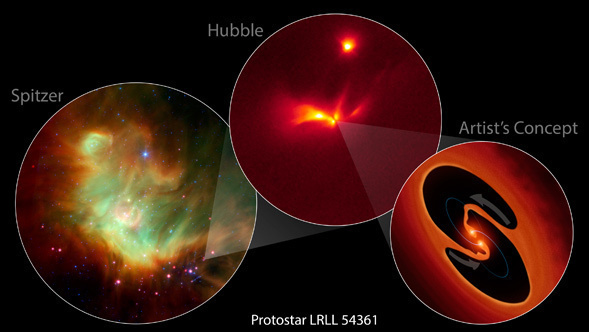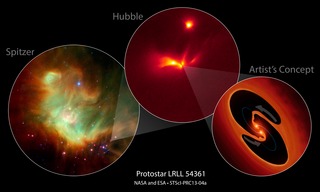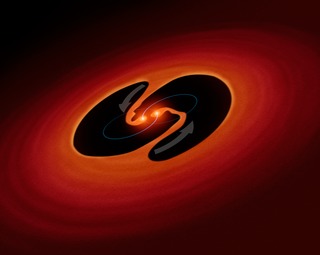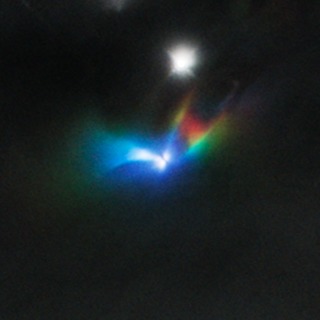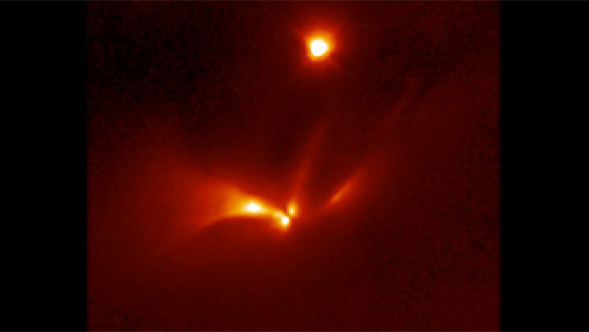
Credit: NASA/ESA/JPL-Caltech/J. Muzerolle (STScI)
Observation • February 8th, 2013 • ssc2013-04c
ssc2013-04c
Flashes of light pulsing through the nebula surrounding the protostellar object LRLL 54361 are captured in this time-coded prismatic image from NASA's Hubble Space Telescope. These surprisingly regular pulsations, recurring every 25.34 days, were discovered by NASA's Spitzer Space Telescope during a period spanning seven years of repeated observations.
Hubble followed up with a series of observations covering a complete pulsation cycle. It saw a remarkable sequence of changing patterns in the surrounding nebula. Most, if not all, of this light results from scattering off circumstellar dust in the protostellar envelope.
The different observations in this rendering are color-coded by time, corresponding to the sequence of the pulsation. The earliest, brightest frames are coded blue, intermediate frames green, and the latest frames (as the pulse reaches the most distant parts of the nebula) red. Surrounding objects that remain constant during the observations look white while the changing light patterns capture the variability of the nebula in color.
This image is thought to represent and edge-on view of a binary star - an orbiting pair of baby stars that are still gobbling up gas from the surrounding protostellar envelope. Astronomers propose that the flashes are due to material in a circumstellar disk suddenly being dumped onto these forming stars. This unleashes a blast of radiation each time the stars get close to each other in their orbit. This accounts for such rarely-seen precision in the timing of the outbursts.
This flash of light passes through the surrounding material, scattering back towards us. This "light echo" is similar to the way we hear a sound echoed back to us over time as it bounces off of increasingly distant surfaces.
Our view here appears to be almost edge-on to the baby binary star system. An apparent edge-on disk surrounding the star is visible as a dark band at the center of the image. The bright fingers further out follow the surfaces of outflow cavities that have blow out to either side of the disk, resulting in an almost hourglass-like structure.
This time-coded near-infrared-light image is from Hubble's Wide Field Camera 3.
About the Object
- Name
- LRLL 54361
- Type
- Nebula > Type > Star Formation
- Star > Evolutionary Stage > Protostar
- Distance
- 815 Light Years
Color Mapping
| Band | Wavelength | Telescope |
| Infrared | 1.6 µm | Hubble WFC3 |
